Today there are more than 200 varieties of remontant raspberries. Even an experienced gardener can get confused with such an assortment. To make it easier for you to make your choice, we have selected on this page the most productive and early ripening varieties of remontant raspberries.
|
Remontant raspberry varieties are harvested until frost |
The main feature of the fruiting of remontant raspberries is that the formation of peduncles occurs not only on last year’s shoots, like traditional raspberries, but also on young ones. But there are other significant differences:
- The ripening of remontant raspberry fruits begins in mid-summer and ends in September - October, while for ordinary raspberries, fruiting lasts only 2-3 weeks.
- In remontant raspberries, flowers and fruits are located along the entire stem, also in the lower axils of the leaves, while in traditional raspberries - only at the ends of the stems.
- In ordinary raspberries, it is necessary to cut off the two-year-old stems that bear fruit and leave the annual stems for next year’s fruit. When caring for remontant varieties after harvesting in November, it is recommended to cut off all stems without exception. In this case, the bush will produce one significant harvest next year.
- Compared to regular raspberries, remontant raspberries have more stable immunity to diseases and parasites.
- The berries of remontant raspberries are larger than those of regular raspberries.
- Remontant varieties are less prone to uncontrolled spread throughout the garden.
According to the description and reviews of gardeners, there are two ways to cultivate bushes. You can always choose one that is most suitable for the climatic characteristics of the region:
- Pruning all shoots in the fall to obtain a single harvest, which for remontant raspberries ripens closer to autumn. The overall yield of remontant raspberries, even in this case, is greater than that of ordinary ones.
- Leaving the shoots that have grown this year for the winter to obtain double fruiting on old and young shoots in the next season.
Red varieties of remontant raspberries for the south of Russia
The south of Russia is characterized by mild, wet winters and hot summers with periodic drought. In such a climate, it is preferable to grow varieties that are resistant to drought, high humidity and temperature fluctuations.
Indian summer
|
A remontant variety popular among gardeners. The berries are located almost along the entire length of the shoot. |
The transportability of the berries is low. It is affected by powdery mildew, purple spot, and spider mites, but is resistant to curl and gray rot.
- Late ripening. The first harvest is harvested at the end of June, the second - from the end of August until frost.
- In the southern regions the yield is 1.5-2.0 kg per bush. The highest yields are observed in the Krasnodar Territory, Crimea, and Dagestan.
- The berries are medium in size - 2.1-3.0 g, conical in shape, bright crimson in color, as in the photo. The pulp is sweet and sour. The sweetness of the berries does not depend on the rainy seasons. 100 g of fruit contains about 30 mg of vitamin C.
- The bush is medium-sized, spreading, 1.5 m high. The thorns are large, straight, hard. Raspberry shoots are poorly formed.
- The planting site is chosen in the southern regions; raspberries need a place protected from the wind and excess sunlight (or shaded) and frequent abundant watering. The distance between bushes is maintained at 0.5-1.0 m.
- Frost resistance -29°…-23°С (zone 5). Included in the State Register in 1995 for the North-Western, Central (Moscow region) and North Caucasus regions.
“The variety is old, but many praise it for its taste, one of the best in the group of remontant varieties, but of course it does not stand out for its large fruits or special yield (or rather, the entire harvest does not ripen on annual shoots).”
In this short video you can look at the Indian Summer raspberry harvest:
Heritage
|
The berries hang on the branches for a long time after ripening and tolerate transportation well. |
Viable and highly productive variety. It is rarely affected by pests and diseases, but does not tolerate a lack or excess of moisture. The upper third of the shoots bear fruit, so the stems bend under heavy load and need staking.
- Fruiting on annual shoots from the second half of August until frost. Maturation - 85-90%.
- The average yield is 3-5 kg per bush.
- The berries are dark burgundy in color, weighing 5-7.5 g. The shape of the fruit is in the form of a shortened cone. The pulp is tender, juicy, distinguished by an excellent sweet and sour taste and intense raspberry aroma.
- The bush is moderately spreading, 1.8-2 m high, the branches are strong, straight, covered with thorns. A distinctive feature of the shoots is that by the end of summer they become almost red.
- The soil is fertile, loose, drained, the distance between bushes is 0.6-0.8 m.
- Frost resistance down to –20°C (zone 5).
“An excellent berry for the city of Alushta. I really like the taste. The variety is heat-resistant and productive. The last berries were picked this year at the end of November.”
Eurasia
|
Due to their compactness and beautiful appearance, during flowering and fruiting, Eurasian bushes are often used for decorative purposes. |
Remontant variety for universal use. Drought resistance is high. Immunity to diseases and pests is average.
- Medium ripening period. Fruiting is compressed - from August to September.
- The yield is 1.5-2.6 kg per plant.
- The average weight of the berries is 3.5-4.6 g, conical in shape, dark crimson in color. The pulp is medium dense, sweet with sour notes, not aromatic, taste 3.9 points.
- The bush is medium with straight shoots, 1.3–1.6 m high, standard type. Usually 5–6 replacement shoots are formed on it. The spininess decreases from the base to the apexes.
- Plants grow optimally in well-lit areas; in the southern regions, slight shading is allowed. The distance between the bushes is 0.6-0.8 m. The cultivation technology provides for autumn mowing of the shoots.
- Frost resistance -35°С…-29°С (zone). Recommended by the State Register of the Russian Federation.
“The fastest ripening of all my varieties is so far Eurasia. The taste is quite good, now is the second half of September - fruiting is coming to an end. I like that it has a lot of berries and the bushes don’t require any care at all.”
Polana
|
The variety is characterized by excellent taste, marketable berries, and drought resistance. |
In one place, the bush successfully bears fruit for 12–14 years. The berries do not fall off after ripening and are well transported.
- When grown in one harvest, the berries begin to be harvested from mid-July; in the middle zone and in the south of Russia, most of the fruits have time to ripen.
- Productivity up to 4 kg per bush.
- The berries are dark crimson in color, as can be clearly seen in the photo, large, up to 4-6 g, cone-shaped, sweet, aromatic. The taste of the berries depends on the weather.
- The bush is dense, over the summer it grows up to 1.5–1.6 m. According to reviews, the shoots do not need garter, the thorniness of the bush is weak. The root system produces a lot of shoots.
- Prefers chernozem and sandy loam soils. It grows better in areas protected from the wind and not prone to flooding.The distance between bushes is maintained at 80-90 cm.
- Frost resistance up to -32 degrees (zone 4).
“I stopped tying up Polana raspberries. The trunk became so thick that I couldn’t handle it with pruning shears, I had to cut it with a saw. I like the taste of this variety, maybe because it grows in an open place.”
Shelf
|
The variety has proven itself when using various technologies in different climatic zones. |
It is distinguished by excellent presentation and taste of the harvest. The berries are also characterized by good keeping quality and high transportability.
- The harvest is extended, abundant, from August (on annual shoots) until frost.
- Productivity 3.5 kg per bush.
- The berries are dark red in color, weighing up to 4 g. The pulp is tender, elastic, juicy, sweet. The seeds are small, the aroma is rich. The maximum tasting score is 5 points.
- The shrub has straight, strong shoots 1.5-1.8 cm long. They do not bend under the load of berries, so they do not need to be tied to trellises. Not many thorns.
- It is better to plant the crop in light shade; the distance between bushes is maintained at 0.5 -1 m.
- Frost resistance -27°C (zone 5). Growing technology involves autumn mowing of shoots.
“The Polka variety is very good. Very different from our varieties. The berries are one to one, never crumble, dense, beautiful, transport well, do not overripe for a long time, hang and do not become soggy, very sweet. The berries are all the same size, the first and last ones do not differ in size. The bushes are not huge, you don’t need to work hard with them, the shoots are strong, a garter wouldn’t hurt, of course, but they’re not bad anyway.”
Crane
|
Crane is a winter-hardy, easy-to-care raspberry. |
Pest and disease damage is at an average level. The berries are stored for a long time and tolerate transportation well.
- Harvest ripening period is early (mid-July).
- The yield is 2 kg per plant.
- The average weight of the berries is 2.7-3.5 g. The shape of the fruit is in the form of a blunt cone, the color is ruby. The berries are very tasty, aromatic, dense. Taste qualities were rated by experts at 4.7 points.
- The bush is powerful, the height of the shoots is 1.5–2 m. The shoots are strong and tall, practically without thorns. Spreading is average.
- For planting, choose sunny areas protected from drafts; the distance between bushes is maintained at 0.7-1.0 m.
- Frost resistance -29°C (zone 4). The variety is recommended for cultivation in the Middle Volga region.
Yellow varieties of remontant raspberries for the south of Russia
Yellow-fruited raspberries are less common in garden plots and mainly only among true connoisseurs of culture. Excellent taste, unusual color, decent yield and healing properties of the berries are the main characteristics of modern raspberry varieties with yellow fruits.
Orange miracle
|
The photo clearly shows how large-fruited this variety is. |
Large-fruited, productive variety. The berries do not fall off and are distinguished by good keeping quality and transportability. The taste depends on weather conditions.
- Medium ripening period. When grown on annual shoots, the berries ripen from mid-August until the first snow.
- The yield is 4-5 kg per plant.
- The average weight of the berries is 5.5...10.2 g, conical shape, bright orange color. Climatic conditions can affect the color of berries. In sunny summers it takes on a pinkish tint. The pulp is tender and aromatic. The taste is sweet with sourness, 4 points.
- The shoots are covered with thorns along the entire length, grow up to 1.8 m. The bush is compact, forms up to 8 shoots. During the ripening of the harvest, the branches may bend low, so they require a garter. The spines are medium, located closer to the base.
- The crop prefers loamy soils and grows well in partial shade. The distance between bushes is maintained at 70-80 cm.
- Frost resistance -30°C (zone 4). Recommended for cultivation throughout the Russian Federation, including the southern regions.
“Really a miracle, corresponds to the description and photo, I bought it last year and was surprised by the size of the berries and taste - perfect! It grows so quickly, I took two seedlings - now probably 15 of them have come out of the ground nearby, this is encouraging.”
Amber
|
Gardeners value Amber raspberries for their unusual color, high yield, and ease of cultivation and care. |
Remontant variety, intended for fresh consumption and canning. Immunity to diseases and susceptibility to pests is at an average level. The advantage is high resistance to drought.
- Mid-season variety (August).
- The yield is 1.7-2.8 kg per plant.
- The average weight of the berries is 2.6-6.8 g. The shape of the fruit is hemispherical, round, the color is bright orange. The pulp is tender, without aroma. The taste is pleasant, sweet and sour, 3.8 points.
- The bush is medium, powerful, slightly spreading. There are 6-9 shoots. Thorns are concentrated only in the lower part of the stems.
- Prefers sunny areas without drafts and stagnant groundwater, the distance between bushes is 0.7-1.2 m. The cultivation technology provides for autumn mowing of shoots.
- Frost resistance -29°C (zone 4). The variety is included in the State Register of the Russian Federation.
Golden autumn
|
A remontant variety of yellow raspberries for universal use. Immunity to diseases and damage from pests is average. |
- The ripening time is considered mid-late (second half of August).
- The yield is stable - 1.5-3 kg per plant.
- The average weight of the berries is 5.0 g. The berries have the shape of an elongated cone, the color of the fruit is golden yellow. The pulp has a delicate consistency and medium density. The taste is sweet and sour with a weak aroma. Taste qualities are rated by experts at 3.9 points.
- The height of the bush is 1.5-2 m. The bush is slightly spreading. There are no more than 5-7 shoots. Thorns on annual stems are located mainly in the lower part of the stem.
- In sunny places without drafts, the distance between bushes is 0.5-1.0 m. According to technological requirements, cutting of stems is assumed in autumn.
- Frost resistance -33°C (zone 4). The variety is recommended for cultivation throughout the Russian Federation.
“For me, this is one of the best varieties of remontant raspberries. I planted it in a sunny place in the corner of the garden, where it is less windy, I fertilize according to a schedule, prune, and from the end of summer until the first frost the whole family harvests.”
Red varieties of remontant raspberries for the middle zone and Moscow region.
The main indicator of remontant raspberry varieties for the Moscow region is frost resistance. In the middle zone the climate is moderate, so the first frosts can be expected in mid-autumn. Based on the fact that seedlings are planted at the beginning of October, resistance to low temperatures is very important.
Atlant
|
Atlant is famous for its large berries and high yield. |
A powerful root system helps to survive short-term droughts. The harvest is well stored and allows for long-term transportation. You can use a machine harvesting method. Immunity to diseases is high.
- The ripening period is medium-late. The berries begin to ripen in the second half of August, fruiting is extended and lasts until frost.
- The harvest can be harvested up to 2-2.5 kg per plant.
- The average weight of berries is 4-7 g.The berries are dark red, glossy. Cone shape with regular outline. The pulp is sweet with sourness, aromatic. Taste qualities were rated by experts at 4.2 points.
- The bush is tall (1.6 m), powerful, upright. Forms 5-7 shoots per bush. The number of spines is medium, concentrated at the base.
- Prefers sunny places for growing, the distance between bushes is 0.8-1.0 m.
- Frost resistance -34°C (zone 4). Recommended for cultivation in the Russian Federation.
Don't forget to read:
Tarusa raspberry tree: planting, care, photos and reviews from gardeners ⇒
Firebird
|
The berries do not fall off after full ripening and are suitable for transportation over long distances. The disadvantages include the watery structure of the fruit. |
One of the best varieties, distinguished by large fruits. It is characterized by average indicators of drought resistance, immunity to diseases and susceptibility to pests. The variety is in demand for planting in small areas, since the bushes are not spreading.
- Ripening time is later. Fruiting should be expected in the second half of August.
- The yield is up to 2.5 kg per plant.
- The average weight of berries is 4.3 - 6.0 g. The fruits are large, beautiful, bright red in color with a glossy sheen. The pulp is tender, sweet and sour (4 points), with an exquisite aroma.
- The bush is tall, reaches 2 m, powerful, slightly spreading. The shoots need a garter to the trellises. The thorns are medium in size, located along the entire stem.
- Choose a sunny place for planting, protected from northern winds; the distance between bushes is maintained at 1.5 m. The developers recommend mowing the above-ground part of the plants for the winter.
- Frost resistance -30°C (zone 4). It shows the best characteristics when grown in central Russia and the Moscow region.
“Firebird is a wonderful, stable, high-yielding variety. The berry is dense, does not become soggy, is not ripe, is already sweet, and does not rot. One of my favorite varieties."
Penguin
|
An excellent early ripening variety. The purpose is assumed to be universal. |
Has average resistance to drought. Immunity to diseases and pest damage is at an average level.
- Early ripening variety - harvest appears in mid-July.
- The yield is 2–3 kg of berries per plant.
- The berries are large-fruited - 4.2...6.5 g. The color is dark crimson, the shape is wide-conical. The pulp is sweet and sour, almost without aroma. The taste is rated 3.7 points.
- A low-growing bush (up to 1.5 m tall), with straight shoots, standard type, does not require garter. Forms from 4 to 6 shoots. Thorns are located throughout the shoot.
- Planted in sunny areas in well-drained, fertile soil, the distance between bushes is maintained at 0.7-1.0 m.
- Frost resistance -31°C (zone 4). Recommended for cultivation throughout the Russian Federation, including the southern regions.
“Basically, my Penguin begins to bear fruit from the beginning of August (sometimes there are individual berries at the end of July). Fruits until mid-October, but the main harvest is August-September.”
Hercules
|
Remontant variety for universal use. Immunity to diseases and damage from pests is low. |
- Ripening time is mid-August.
- Productivity up to 4 kg per plant.
- The average weight of the berries is 5-7 g. The shape is blunt-conical, the color is deep red. The pulp is sweet and sour, aromatic. Taste qualities are rated 4.0 points.
- Bush up to 1.5 m high, slightly spreading, straight. The shoots are brown, straight, with strong thorniness throughout the stem, the number is average.
- The place for breeding is chosen to be sunny, without stagnant groundwater.The distance between the bushes is maintained at 0.7-1.0 m. The developers recommend mowing the above-ground part of the plants for the winter.
- Frost resistance -33°C (zone 4). Recommended for cultivation in the Central region.
“I have two Hercules bushes, but so far I can’t say anything bad. The berry is large and tastes nothing.”
Diamond
|
Developed specifically for Central Russia. It is distinguished by its beautiful presentation of berries. |
The variety is characterized by excellent ability to withstand drought and heat resistance without damaging the crop, and good transportability of the crop.
- The start of ripening is the first ten days of August.
- Productivity 3.2-3.9 kg per plant.
- The average weight of the berries is 4-6 g, the color is ruby with shine, the pulp is tender and aromatic. The taste is sweet and sour.
- The shoots are medium-sized, require garters on trellises, and there are few basal shoots. There are not many thorns, located mainly at the base of the shoot.
- Diamond is planted in sunny places with protection from northern winds, the distance between bushes is maintained at 0.4-0.6 m.
- Frost resistance down to -32°C (zone 4). In the Moscow region he shows his best qualities.
“The taste of Diamond changes depending on the weather: sometimes it’s very sweet, sometimes it’s not at all. We collect it twice a week (we need to do it more often) and each time the taste is almost the same, even the location of the bush is different, or rather the branch is in the shade or in the sun and the taste is already sweeter.”
Do not miss:
Yellow varieties of rem. raspberries for the middle zone and Moscow region
Apricot
|
Apricot raspberry is one of the most unpretentious and productive among the yellow-fruited varieties of the remontant series. |
It has high immunity to diseases and pests. Transportability is low. The variety got its name because of the characteristic color of the berries.
- The crop begins to bear fruit from the second half of July until the end of October.
- The yield is 3.5 kg per plant.
- On average, the berry weighs 3-4 g. The shape of the fruit is in the form of a cone with a blunt end, the color is golden-apricot. The pulp has a sweet and sour taste with apricot notes, the aroma is weak. Taste indicators: 4.5 points.
- The bushes are slightly spreading with erect shoots, covered with a small number of thorns at the base.
- Grow in a sunny area, protected from the wind and not suffering from stagnant water, the distance between the bushes is 0.6–0.7 m. There is no need to bury Apricot raspberry seedlings deeply, so as not to provoke slow development.
- Frost resistance down to –29°C (zone 4). The variety is recommended for cultivation in the middle zone and the Moscow region.
“On the advice of the nursery workers, I purchased the Apricot raspberry variety last spring. Stunning variety. Very unpretentious and easy to care for. In the same season he collected his first harvest. The taste is very rich, the aroma is unimaginable. In general, this is why we love raspberries. I recommend it to everyone, I am sure that any gardener, both experienced and beginner, will be satisfied.”
Alt gold
|
The variety is winter-hardy, productive, and transportable. The berry is well colored, dense and tasty, with a subtle noble aroma and beautiful shape. |
- When grown in one crop, fruiting begins in the second half of August and lasts until frost.
- The yield is 5-7 kg per plant.
- The berries weigh up to 5-7 g, bright yellow, round, dense, juicy, sweet, aromatic.
- The bush is medium-sized (1.5 m), erect. Sharp thorns are located at the bottom of the bush.
- Planted in sunny areas, without drafts and stagnant moisture. The distance between bushes is maintained at 0.5-0.7 m.
- Frost resistance down to –32°C (zone 4).The variety is recommended for cultivation in the Central region.
Do not miss:
Yellow Giant
|
The quality of the Yellow Giant fruit depends on humidity and air temperature. |
Drought, like prolonged heavy rains, does not lead to a drop in yield, but changes the taste of berries for the worse. They become excessively watery or dry. Ripe berries fall off quickly.
- Medium early ripening, fruiting lasts from July to the end of September.
- The yield is up to 6 kg per plant.
- The weight of each berry is 7-8 g. The fruits are sweet and aromatic, amber-yellow in color. One side shoot can ripen 15-20 berries at once.
- The shoots are straight, covered with green thorns, reaching a height of 2–2.5 m. The bush is slightly spreading.
- The optimal place for planting is a lighted area without drafts. Seedlings love neutral soil. The distance between bushes is 0.6-0.8 m. Yellow giant raspberries do not like deep planting.
- Frost resistance -30°С…-28°С (zone 5). In the middle zone and Moscow region, the Yellow Giant shows good productivity.
“It’s a good raspberry, but it grows very quickly. We have to dig slate around the perimeter and weed all summer, cut out the growth, there is no other way to contain it.”
Do not miss:
Golden domes
|
The main advantages of the Golden Domes variety are: stable and high yield, versatility of use, good keeping quality, resistance to drought and low temperatures, immunity to diseases and pests. |
- The first raspberry harvest appears at the end of June, the second in August.
- Productivity up to 3 kg per bush.
- The berries weigh 3–4 g, have a spherical shape, and a rich apricot color. Raspberries are very sweet with a slight sourness. The flesh is tender.
- The height of the bush is 1.4 m. The shoots are powerful and do not break off in windy weather, there are few thorns.
- Choose a sunny place for planting, sheltered from northern winds; the distance between bushes is maintained at 0.5-0.8 m.
- Frost resistance down to –29°C (zone 4). The variety is recommended for cultivation in the middle zone and the Moscow region.
Don't forget to read:
Raspberries in autumn: planting, replanting, pruning and propagation ⇒
Features of growing remontant raspberry varieties
The cultivation of remontant raspberries is carried out taking into account its characteristics. The culture places increased demands on light, heat, moisture, and soil fertility.
In the Central region, even slight shading delays the ripening of berries and reduces yield. In the southern regions, plants receive a lot of sunlight, so they tolerate shading well: in the shade of trees or a house, between buildings.
Despite the fact that raspberries do not like stagnation of moisture at the roots, nevertheless, for the proper development of the crop, a sufficient amount of water is necessary in the soil throughout the entire season. Therefore, in the southern regions, at elevated temperatures, increased requirements should be given to irrigation.
In the Moscow region and central Russia, it is allowed to plant remontant raspberry varieties in both spring and autumn. In the southern regions, planting raspberries is recommended in the fall, since even the most resistant varieties will not have time to adapt if the temperature rises quickly in the spring. Neither frequent watering nor treatment with stimulants will save the situation.
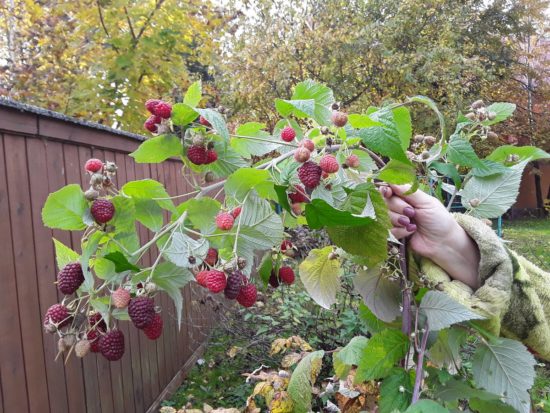
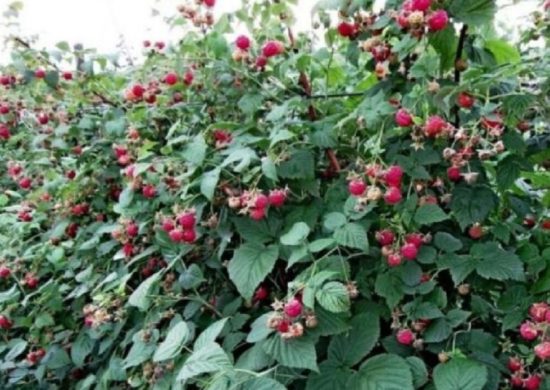
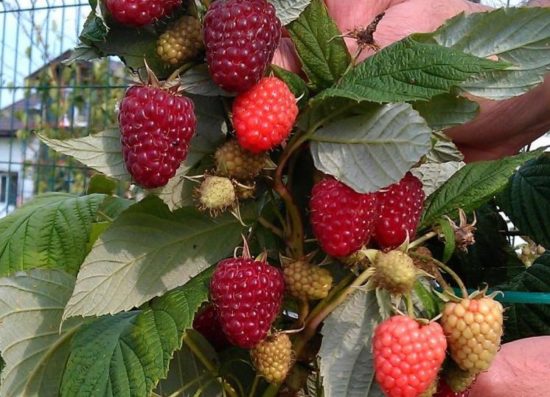
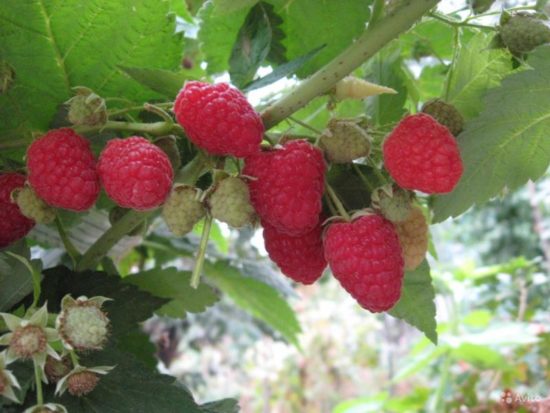
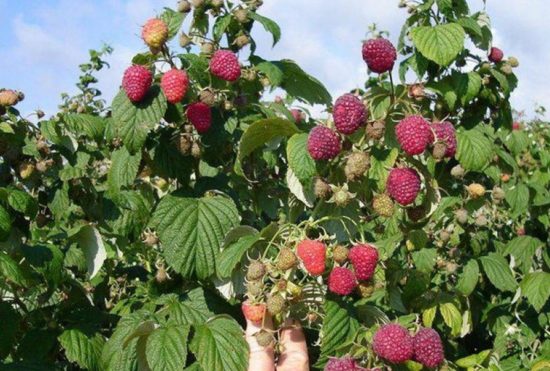
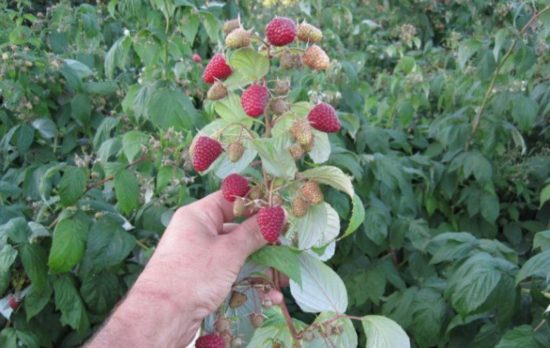
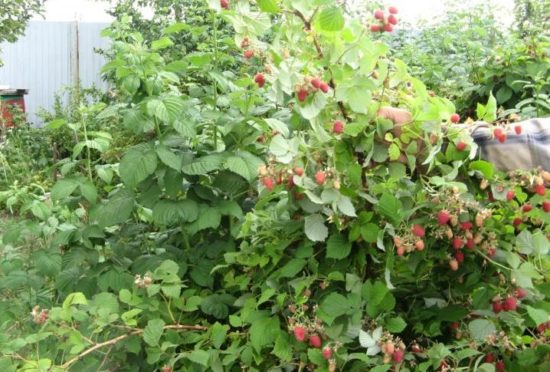
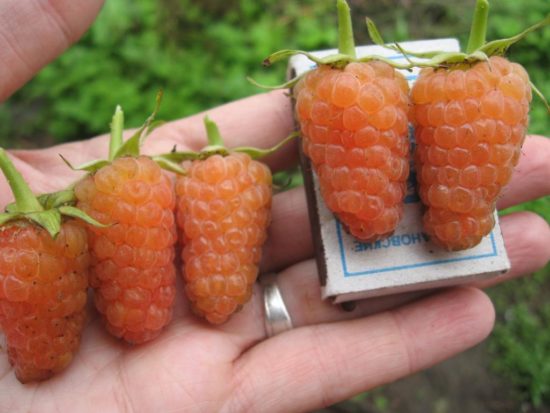
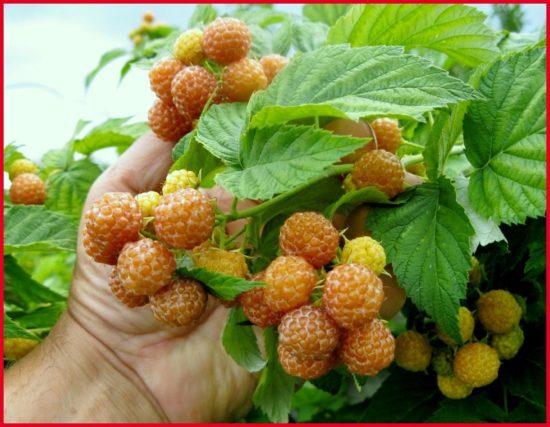
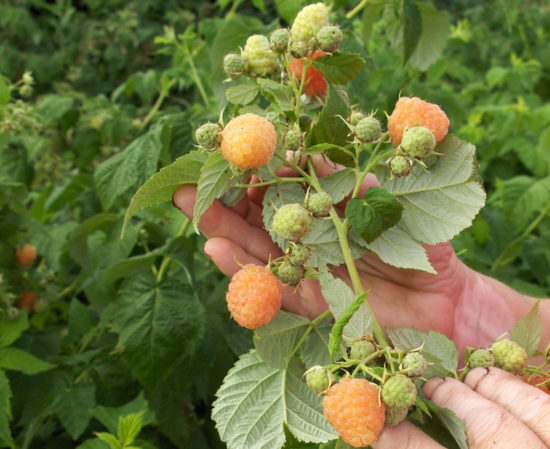
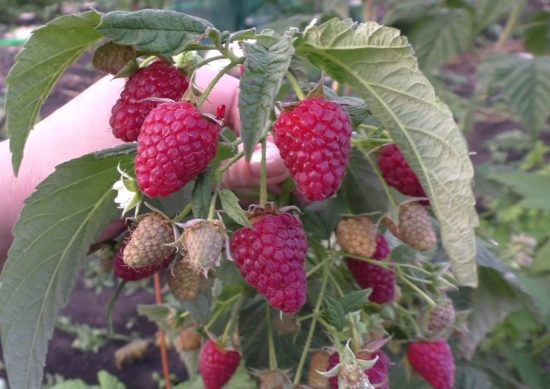
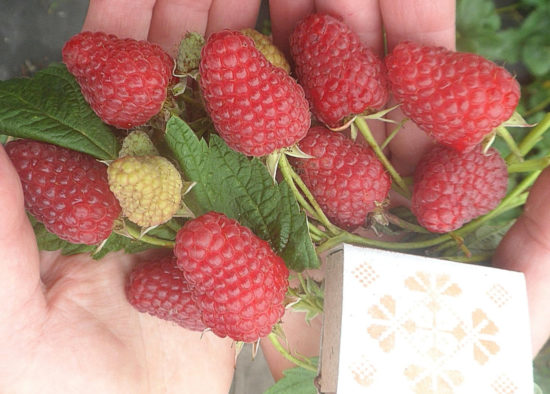
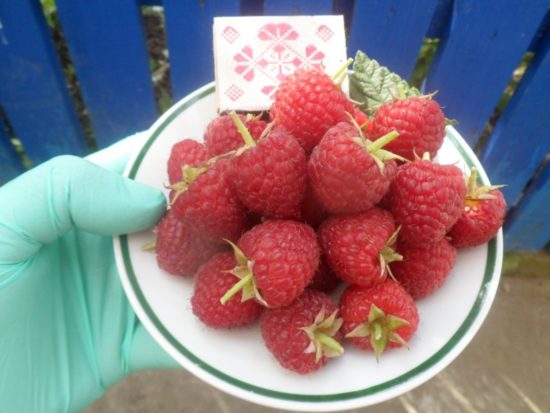
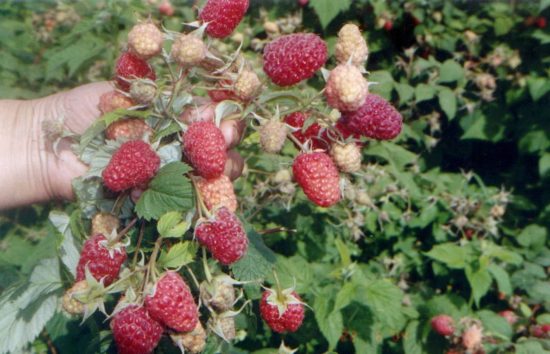
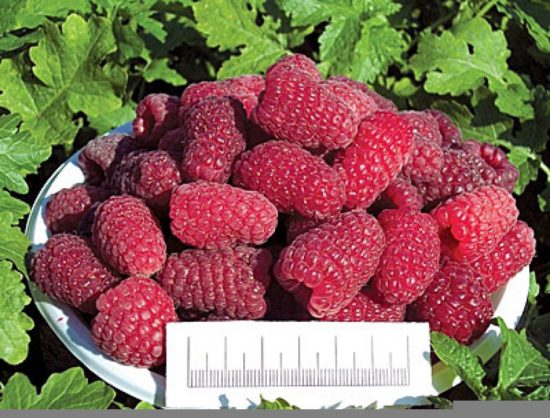
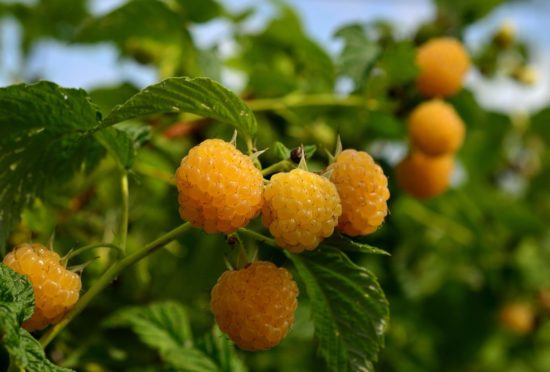
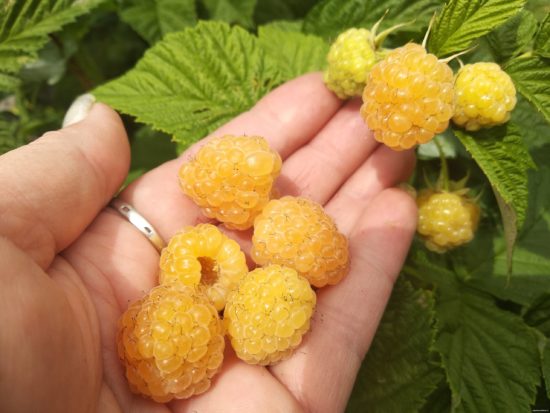
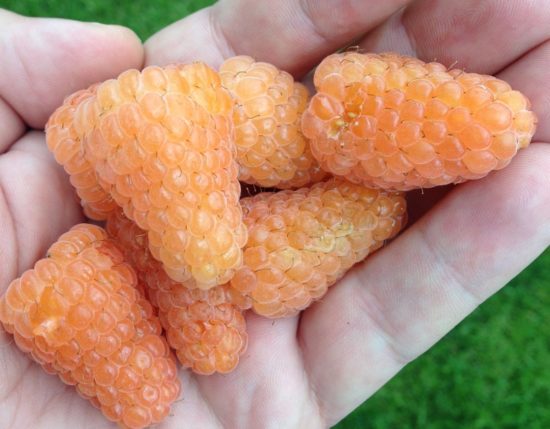
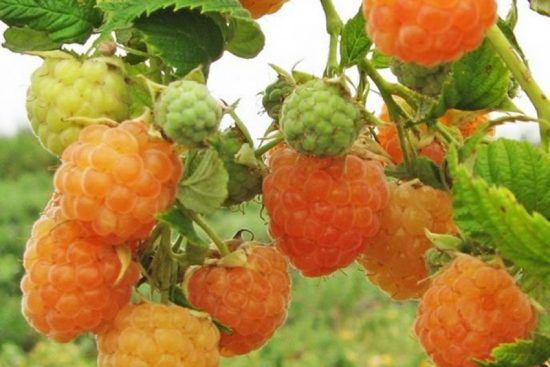

 CUCUMBERS NEVER GET SICK, I'VE BEEN USING ONLY THIS FOR 40 YEARS! I SHARE A SECRET WITH YOU, CUCUMBERS ARE LIKE THE PICTURE!
CUCUMBERS NEVER GET SICK, I'VE BEEN USING ONLY THIS FOR 40 YEARS! I SHARE A SECRET WITH YOU, CUCUMBERS ARE LIKE THE PICTURE! You can dig a bucket of potatoes from each bush. Do you think these are fairy tales? Watch the video
You can dig a bucket of potatoes from each bush. Do you think these are fairy tales? Watch the video
 How our fellow gardeners work in Korea. There is a lot to learn and just fun to watch.
How our fellow gardeners work in Korea. There is a lot to learn and just fun to watch. Eye trainer. The author claims that with daily viewing, vision is restored. They don't charge money for views.
Eye trainer. The author claims that with daily viewing, vision is restored. They don't charge money for views. A 3-ingredient cake recipe in 30 minutes is better than Napoleon. Simple and very tasty.
A 3-ingredient cake recipe in 30 minutes is better than Napoleon. Simple and very tasty. Therapeutic exercises for cervical osteochondrosis. A complete set of exercises.
Therapeutic exercises for cervical osteochondrosis. A complete set of exercises. Which indoor plants match your zodiac sign?
Which indoor plants match your zodiac sign? What about them? Excursion to German dachas.
What about them? Excursion to German dachas.